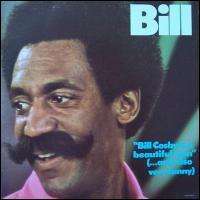
Bill (weapon)
The bill is a polearm weapon used by infantry in medieval Europe. The bill is similar in size, function and appearance to the halberd, differing mainly in the hooked blade form. Other terms for the bill include English bill, bill hook or bill-guisarme.
Design
Derived originally from the agricultural billhook, the bill consisted of a hooked chopping blade with several pointed projections mounted on a staff. The end of the cutting blade curves forward to form a hook, which is the bill's distinguishing characteristic. In addition, the blade almost universally had one pronounced spike straight off the top like a spear head, and also a hook or spike mounted on the 'reverse' side of the blade. There were many types of bill. English bills tended to be relatively short, with broad chopping heads, while Italian bills (ronche) often had very long thrusting points. The English distinguished between several varieties of bill, including the black, brown and forest bills, but the differences between them are currently not fully understood.

List of unidentified decedents in the United States
An unidentified decedent, or UID, is a deceased person whose legal identity is unable to be determined by law enforcement. Although the majority of UIDs are identified soon after their bodies are recovered, it is not uncommon for bodies to remain unidentified for years or even decades. There are approximately 40,000 unidentified decedents in the United States at any given time.
A deceased body can be identified in several different ways. Most commonly, a relative of the deceased identifies the body by sight. However, if a body is heavily decomposed, skeletal, or unrecognizable due to severe facial trauma at the time of recovery, other methods must be used. Some other common modes of identification include fingerprints, dental records, chest x-rays, and as a last resort, comparing the deceased's DNA to the DNA sequence of a genetically close relative such as a parent or sibling. In some cases, circumstantial evidence can be used to formally identify a body; for example, if the deceased has a driver's license on their person, or is found deceased on their own property after going missing, those context clues can be used to make an identification. Since identification of a deceased individual is a legal matter, officials require a high degree of certainty in order to make a formal identification.

Bill (Bill Cosby album)
Bill (1973) is a compilation album of previously released material by Bill Cosby. All the routines are edited down compared to their original appearances on previous albums, some slightly, some considerably.
Track listing
References
1990 National Invitation Tournament
The 1990 National Invitation Tournament was the 1990 edition of the annual NCAA college basketball competition. This tournament adopted the tenths-second game clock in the final minute of every period when played in NBA arenas.
Selected teams
Below is a list of the 32 teams selected for the tournament.
Brackets/Results
Below are the four first round brackets, along with the four-team championship bracket.
Semifinals & Finals
References
1968 National Invitation Tournament
The 1968 National Invitation Tournament was the 1968 edition of the annual NCAA college basketball competition.
Selected teams
Below is a list of the 16 teams selected for the tournament.
Brackets/Results
Below is the tournament bracket.
References
1944 National Invitation Tournament
The 1944 National Invitation Tournament was the 1944 edition of the annual NCAA college basketball competition.
Selected teams
Below is a list of the 8 teams selected for the tournament.
Brackets/Results
Below is the tournament bracket.
References
Podcasts:

